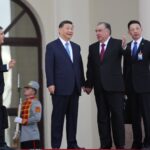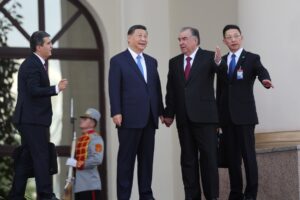Heidelberg Materials has been looking to simplify its portfolio and reposition the company on a net zero path. This has seen divestment and merger ripples recently reach the cement markets of Georgia and Tanzania.
Creating funds to reallocate for investments in the circular economy and the wider building materials sector has seen Heidelberg Materials start to accelerate divestment activity this year. The group’s divestment of its eastern European joint venture in Georgia, where it held a 45 per cent participation in Caucasus Cement Holding BV, the parent company of HeidelbergCement Georgia Ltd and Terjola Quarry Ltd, was completed in the third week of April. Heidelberg Materials sold its share in Cement Invest BV, an investment company managed and owned by the Georgian Co-Investment Fund and Hunnewell Partners. This meant the divestment of two Georgian cement plants in Kaspi (1.97Mta) and Rustavi (0.86Mta) as well as 14 ready-mix concrete plants and two aggregate plants.
Unlocking capital from its former Georgian operations could well help see investments elsewhere this year. The market of Tanzania is one such market that could see Heidelberg Materials extend its cement capacity through its continued merger attempts.
Scancem’s prolonged Tanzanian merger attempts
Heidelberg Materials‘ Scancem International DA subsidiary has long tried to merge the Twiga Cement (2.15Mta) operations in Tanzania with AfriSam Mauritius Investment Holdings, owner of Tanga Cement (1.25Mta). Scancem first tried to acquire 68.33 per cent of Tanga Cement in 2021, but the Fair Competition Commission (FCC) initially approved the TZS137.33bn (US$58.5m) merger with the proviso that Tanga Cement would not be closed, that Tanga’s Simba Cement brand be continued and that existing staff at Tanga were not laid off. However, the Chalinize Cement Co Ltd and the Tanzania Consumer Advocacy Society appealed to the Fair Competition Tribunal (FCT) to quash the merger in September 2022 because it was alleged that it would distort market competition.
In February 2023 the FCC began a review of the proposed merger after Scancem made a fresh application to acquire Tanga Cement’s share capital, showing that its combined market share would remain below the 35 per cent legal threshold if the merger went ahead. Yet an individual, Peter Hellar, appealed against the review, suggesting it was in contempt of the FCT’s earlier ruling in September 2022. So, the merger was again restrained pending the FCT’s hearing on this matter.
The attractiveness of Tanzania’s cement market
Through Scancem, Heidelberg Materials is willing to continue its protracted fight to see a merger completed with Tanzania’s Tanga Cement. This east African cement market is growing rapidly, which has stirred the interest of Heidelberg Materials and other cement producers.
Cement consumption in Tanzania is being led by the construction of the 3.2km Kigongo-Busisi Bridge linking the regions of Mwanza and Gieta, the Bus Rapid Transit (BRT) infrastructure along the Kilwa Road in Dar es Salaam, the multi-billion standard guage railway construction, as well as the Julius Nyerere hydropower project. Accordingly, cement consumption saw an increase to 7.53Mt in 2022, up 9.7 per cent from the 6.86Mt consumed in 2021, according to the National Bureau of Statistics (NBS). Cement production has also increased to 7.59Mt in 2022, up from 6.61Mt in 2021, or a rise of 14.9 per cent, states NBS.
Meanwhile, Tanzanian imports have fallen from 0.69Mt in 2021 to 0.56Mt in 2022 and exports have risen from 0.44Mt in 2021 to 0.63Mt in 2022, reports TanzaniaInvest. The major export markets for cement are Rwanda, the Democratic Republic of Congo, Burundi, Malawi and the Comoros islands.
A renewed push for the merger
This week, fresh calls for the merger have emerged again as Tanga Cement is faced with closure unless the merger is made. Patrick Rutabanzibwa, board chairman of Tanga Cement, announced that the continued uncertainty over the merger was causing an atmosphere of fear and panic among the company’s 3000 employees. Tanga Cement’s projected operating profit before interest and tax for 2022 is between 130-170 per cent lower than its 2021 results, while loss per share for the year is estimated at TZS250-270 (US$0.10-0.11).
“The contributing factors to this movement were the significant increase in fuel prices and logistics costs which led to an increase in raw material prices, the frequent electric power cuts and unstable electricity supply resulting in increased fuel consumption for own diesel generators and the resulting increased maintenance costs of equipment,” said Mr Rutabanzibwa.
Scancem International argues that overcapacity in the market has been caused by the arrival of Dangote Cement Plc (3Mta) and Huaxin Cement Co Ltd (1.6Mta), while three other cement producers are adding 15 per cent of additional cement capacity in 2023, according to Scancem International.
“After this transaction [the potential merger of Twiga and Tanga Cement], there will be more than 12 players in the cement industry, which ensures a healthy competitive landscape, far above that in neighbouring countries,” claims Scancem.
Source: cemnet











